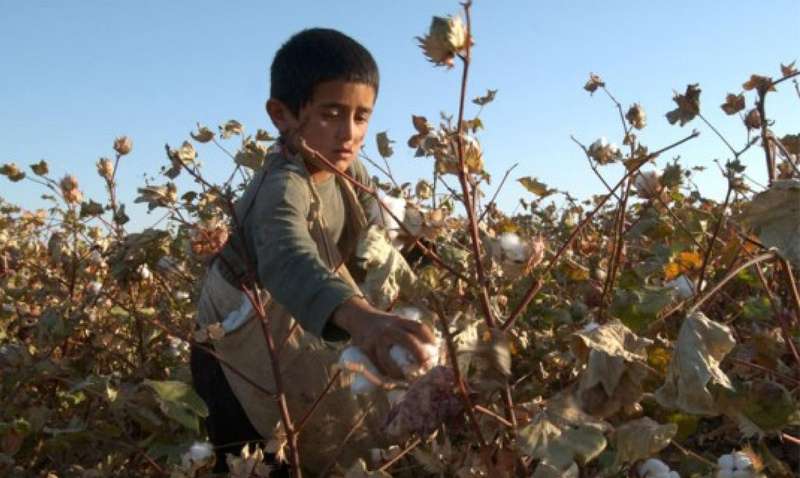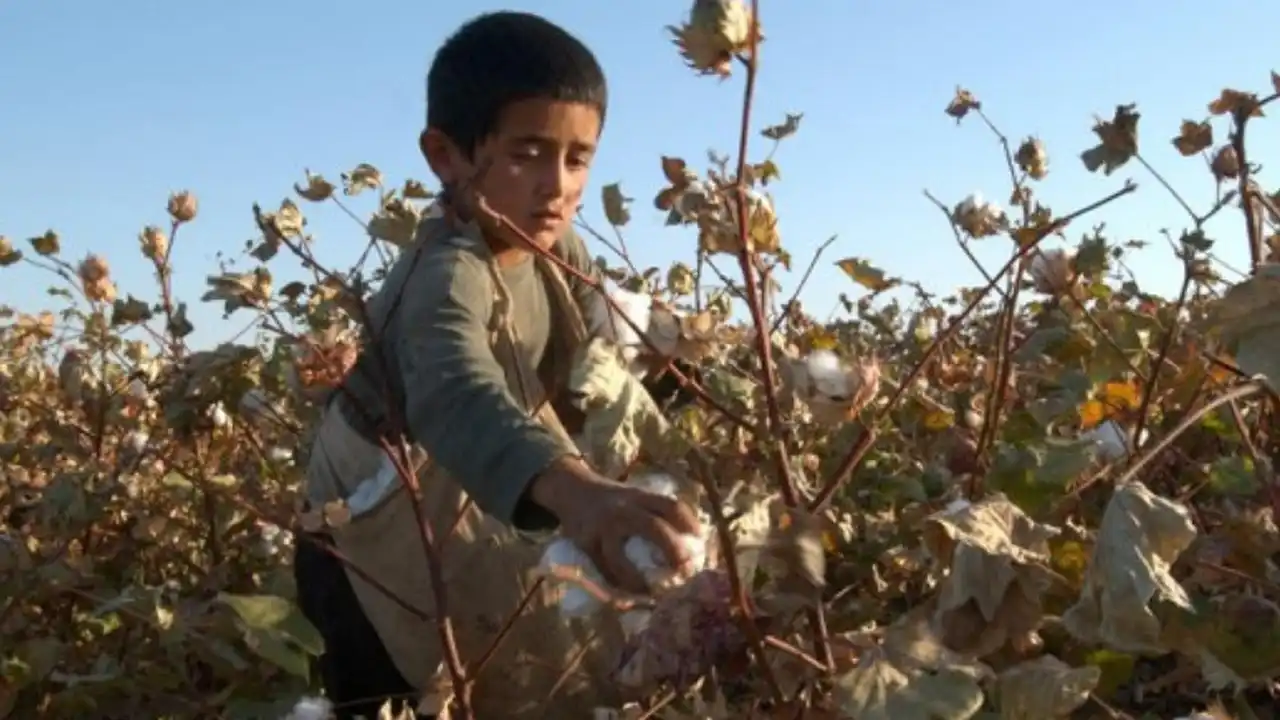 International Labour Organization report to the World Bank finds systematic use of child labor in Uzbekistan’s cotton harvesting.
International Labour Organization report to the World Bank finds systematic use of child labor in Uzbekistan’s cotton harvesting.
The other day, an old lady at a high-end shopping brand’s billing counter asked a very unassuming yet thought-provoking question to the biller—“Young man, tell me where have you sourced the cotton for this beautiful dress that I plan to wear on my wedding anniversary?” That was such an embarrassing moment for the giant apparel store. The biller, pretty confused, asked, “Ma’am my manager can answer your question, but presently he is not on the floor. I would surely keep his answer for your next visit. The dress that the 75-year lady bought was a pretty expensive one, and I was shocked to see her returning the dress saying, “My child, keep this dress, for now, I’ll buy it when I have the answer.” In the minimal crowd of elite buyers, four left immediately. I, quite confused, followed suit. Somewhere I felt that the old lady could be referring to slavery in cotton farming.
What are your thoughts on slavery in supply chain compliance? Recent researches by The Aberdeen group suggest that supply chain compliance is one of the top challenges that leading supply chain establishments are pretty concerned about. Along with government agencies, several local and international NGOs have made anti-slavery regulations pretty stringent. US Trafficking Victims Protection Act (TVPA) (2000), UN Protocol to Prevent, Suppress and Punish Trafficking in Persons (2003), Anti-Trafficking in Persons Act (2003), UK Modern Slavery Act (2015), US California Transparency in Supply Chains Act (2010), Trade Facilitation and Trade Enforcement Act (2016) etc. are some of the governing regulations that require organizations take their regulatory and internal compliance seriously. At this stage, failing to abide by such regulations is not only financial loss that one can still recover from but also loss of reputation that can’t be built overnight. As a responsible organization, it is imperative that there’s sufficient awareness about slavery at every level and within the deeper pockets of the supply chain.
Screening Strategy for Slavery in Supply Chain

Photo Credit: Kolumn Magazine
- To evaluate the legal standing of the supplier, a thorough review of company registration, tax and financial statements, disclosure of shareholders/directors and former and current trading names, should be conducted.
- Check for any pending litigation with the supplier. Check for bankruptcy details filed by the supplier within its area of operation or place of registration.
- Conduct a reputational review of the principals and shareholders of the company, which may include a review of the reputation and legal standing of the individuals.
- Screen your supplier for sanctions and permissions for international trade, prohibited parties’ databases, watch lists and other documents published by local and international authorities and respective government.
- Study finds a high linkage between money laundering, corruption, and slavery risk. Given that it is pretty challenging to pin-point slavery or forced labor within a complex supply chain, financial, legal, and tax data offer significant hints for modern slavery.
- For assisting with the above, adverse media screening policy can help organizations audit prospective supplier on any KYC or AML compliance issues. They can provide the supplier’s negative track record if any.
The above supplier screening strategy can help identify and stall the risks of modern slavery and forced labor. It can help determine illegal labor brokers and recruitment agents. And to get started, it begins with embracing a modern supply chain management tool that ensures basic supplier onboarding hygiene and then to proceed with established consulting firms with rich experience in the domain.
Over 47% of companies have established programs to prevent and detect supply-chain risks (up from 43% a year ago), according to Deloitte. Founder of Verite, Dan Viderman informs us how when Apple learned about its workers being charged unethically, it assumed the responsibility to reimburse up to $20 million in fees. Believe that?
I applaud the little battle of the old woman. Her gesture passed down a tough message against companies that involve in unethical sourcing of either raw materials or finished goods that exploit human beings in deplorable conditions. It is a warning for businesses engaging illegal contractors and labor suppliers and a reassuring statement for progressive industry leaders that eventually all our businesses are going to earn their due though ethical practices alone.




























































